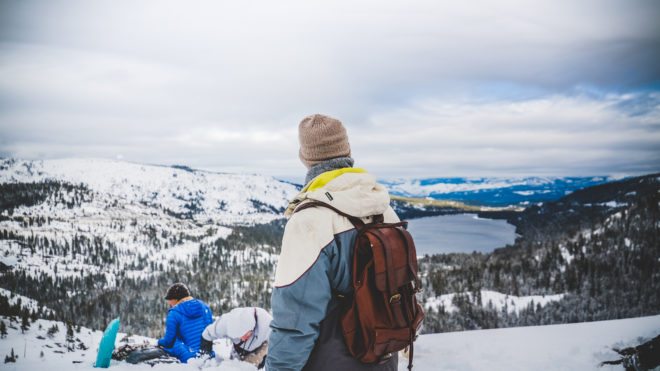
Hiking in the winter time is a chance to test your own limits. Between the cold temperatures, snow, and icy trails, hiking during the winter will teach you a lot about yourself. And, whether you’re one of those winter hikers who’s experienced with these type of conditions or you’re at it for the first time, you’ll start to notice little problems while you’re on the move.
1. Sticky, uncomfortable layers
Winter hikers need to wear a lot of layers and heavy gear to keep warm. But, one thing that hikers know all too well is how quickly you can ‘overheat’ under everything you’re wearing. By the time you get up one hill, you might be tempted to start shedding your layers, only to get cold again and put them back on. Then, the cycle repeats, making for a very frustrating experience on the trail.
How to fix it: Though layers are important, wear what’s comfortable. For some people, three layers may be an appropriate limit. Make sure you have breathable layers so that you’re not sweating through everything. Also, make sure none of your layers are too bulky because that will make it more difficult to hike.

2. Socks slipping off in your boots
There is seriously nothing more irritating than your socks sliding off into your boots or shoes – winter hikers know this all too well. Having to stop every two minutes to constantly pull your socks back up not only slows you down on the trail but is also just a nuisance.
How to fix it: Get the right socks! If you are using old hiking socks, the elastic at the top may be a little stretched out, without you even noticing it. Also, many hiking boots suggest socks that go best with the shoes. You can also get sticky tape or socks with silicone on the heels to keep your socks secured to your feet.
3. Maneuvering things with heavy gloves
When you’re out on the trail in the winter time, you need to wear gloves. Often, a winter hikers hands can be the first to go, and if not protected, can be at risk of getting frostbite. Unfortunately, many of the gloves we see on the market are so bulky. It makes it extremely difficult to get things out of your bag, or even do simple tasks like cooking a meal.
How to fix it: First of all, anything you’re going to need while on the trail, get out of your bag before you start moving. Also, get yourself two pairs of gloves. One thick pair that’s solely for hiking in the cold, and one thinner pair that’s easier to move your fingers in once you’re at your campsite. And, how about those pockets? Make sure your coat as pockets you can stash your gloves in if you need to take them off for a minute.

4. Having trouble walking
Hiking a trail is difficult on its own. Hiking it when its covered with packed snow is a serious challenge. So much so, it can often discourage people from wanting to get out there to begin with. But, there are solutions.
How to fix it: No one expects you to take on the snow alone. There are plenty of tools out there to help you conquer the snow, without forcing you to put in all your energy. You can choose from crampons, snowshoes, Vibram Arctic Ice Grip soles, and even trekking poles to help you take some of the weight off your knees.
5. Suffering windburn
For some people, cold weather isn’t a big deal. They’d much rather feel some chill than the sun melting their face away. But the fact of the matter is, wind chill is very uncomfortable and can cause windburn to your face.
How to fix it: Make sure you do your best to protect every section of your skin. Remember, your skin is the largest organ in your body and often the hardest to maintain in extreme conditions. Also, consistently apply lotion starting about a week before your trek. Choose from wearing a balaclava, or a ski mask, sunglasses, and/or a hat to cover your ears. Carry some vaseline in your bag with you to lotion up those dry areas.

6. Carrying heavier gear
Hiking in the winter means having to carry heavier gear. Even if you try to be the lightest backpacker there is, there are some things that you just can’t sacrifice for a lighter bag. The idea that one needs to carry more weight on their back in order to hike this time of year, means a lot of people opt to stay home.
How to fix it: There are lightweight versions of winter gear out there. Though there is a limit as to how light a winter sleeping bag or tent can be, there are always ways to minimize that weight. Additionally, if you’re going on a thru-hike, you can resupply as you go to save some room in your bag.
Every hiking season has its own unique and annoying problems. What other pet peeves do you have while winter hiking?













